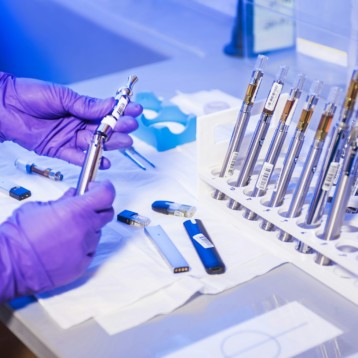|
Cell rolling is a biological process in which the flow of cells through blood vessels slows down, causing the cells to adhere to the vessel walls and roll. This process occurs when a protein called P-selectin is present on a blood vessel’s inner wall, and P-selectin sensitive cells are present in the blood. The P-selectin causes the blood cells which are sensitive to it, to adhere to the walls of the blood vessel and to roll across them.
In the framework of their research, the MIT and University of Rochester researchers tried to mimic the process of cell rolling in order to develop a device that will selectively provide signals to cells traveling through the bloodstream. The research group, headed by Jeffrey M. Karp of the Harvard-MIT Division of Health Sciences and Technology, identified a polyethelene glycol (PEG) coating that strongly bonds to P-selectin and immobilizes it. This coating is potentially safe for use in an implant since it does not react with other proteins or accumulate them.
To validate this discovery for cells that are sensitive to P-selectin, the scientists poured neutrophils (white blood cells) across a surface coated with layers of PEG and P-selectin. The neutrophils slowed down as they flowed over the coated surface, and rolled on it. This effect lasted for at least as long as the technique was tested – four weeks. Animal studies are now required in order to try and implement the method and see whether similar effects can be achieved within living systems.
This deliberate cell rolling technique is ultimately meant to serve as the basis for a device that would also include a therapeutic agent, interacting only with certain cells in the bloodstream for a specific purpose. It may represent a major advance in cancer treatment, as such a device has the potential to specifically slow down and kill metastatic (spreading) cancer cells circulating in a patient’s blood stream, thereby preventing metastases formation. Another interesting potential application of the device is in stem cell therapy. Differentiation signals could be sent to specific stem cells, instructing them to turn into cells of a certain type that are missing in the body for some reason. Such a device could also be used as a diagnostic tool for a variety of diseases.
Two additional approaches for the detection and killing of lone cancer cells recently covered by TFOT include the nanocytometer that is able to locate even very low concentrations of specific cells in a blood sample, and the use of alpha-particles’ radiation for targeted killing of cancer cells.
More information on the cell rolling research can be found in the MIT press release page.












